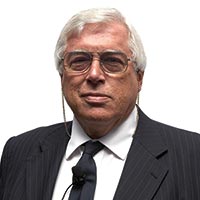Projects and Features
Structural SteelDesign Awards 2023
Introduction
By Roger Plank – Chairman of the Judging panel.
This is my first year as chair of the judging panel and I am indebted to my fellow judges for making the role so easy and enjoyable. Each are experts in their own fields of architecture, engineering design and steel fabrication, and give freely of their time to make this Awards scheme such a success. Having returned to our normal pre-pandemic procedures last year we were again able to meet together to examine the schemes submitted and debate their merits, with members of the panel bringing their passion for high quality design and construction in steel.
The Awards scheme provides an opportunity for the sector to showcase excellence in the use of structural steel by practitioners in the UK and Ireland across a wide range of projects varying in scale, regional location and budget. We look for high quality in all aspects of a project, and are particularly interested in those which demonstrate a real commitment to reducing lifetime carbon use.
Again, this year there was a wide variety of entries ranging from the largest prestige city office buildings to elegant footbridges and public sculptures. Following our established practice, we met to make a preliminary selection based on a ‘desk-top’ examination of the paper submissions to give us a shortlist of projects to be visited. Companies submitting entries should therefore recognize the critical importance of this – a clear, concise, well-illustrated entry highlighting those aspects of the project which make it special will help in making the cut.
The entrants of the shortlisted schemes were all then notified and invited to host a visit by the judges. These visits are a special feature of this Awards scheme, giving the judges a firsthand opportunity to understand and experience the selected projects, and to quiz the project teams about any specific points. In this way we are able to build up a much clearer view of the special merits of individual entries and this is extremely helpful in coming to our final decisions. Again, visits which are represented by an informed, collaborative and enthusiastic team are particularly useful.
Once all visits had been completed the judging panel reassembled to compare notes and exchange views. It is not an easy task to compare such a diverse range of projects, considering their architectural and engineering merits, the quality of fabrication and assembly, any particular innovations or challenges, issues of sustainability, and the contribution they make to society at large. But the judges bring all of their professional experience and expertise to bear and, after a detailed discussion, we were able to reach a consensus.
In conclusion I can say, on behalf of all the judges, that the awards, commendations, merits and national finalists recognised in the Structural Steel Design Awards this year reflect the impressive quality of the current steel construction industry, and everyone involved should be proud of what has been achieved.
The Judges
Roger Plank is a structural engineer and, having recently retired as Professor of Architecture and Structural Engineering at the University of Sheffield, is currently a director of Vulcan Solutions Ltd offering software and consultancy services in fire engineering. He has collaborated extensively with the steel construction sector in the fields of fire engineering and sustainability, and is a Past President of the Institution of Structural Engineers.
Richard Barrett was Managing Director of Barrett Steel Buildings for over 20 years prior to its sale in 2007 in a management buyout, and is Chairman of steel stockholder Barrett Steel. Richard studied engineering at Cambridge University, graduating in 1978. At Barrett Steel Buildings, he developed the business into a leading specialist in the design and build of steel-framed buildings for structures such as distribution warehouses, retail parks, schools, offices and hospitals. He was President of the BCSA from 2007 to 2009, and was a member of BCSA’s Council from 1994 to 2017.
Paul Hulme joined Robert Watson & Co as an apprentice draughtsman in 1981. In the following 36 years he held positions in all areas of the company, gaining appreciation of all aspects of the steelwork industry, most recently in the role of Project Director. Over the years Paul has been fortunate to be involved in many complex steel structures, both in UK and abroad. Most notable are Kansai and Hong Kong airports, Terminal 5 roof, London 2012 Olympic Stadium and Wimbledon Centre Court Redevelopment. Paul currently works as an independent consultant offering design and buildability advice to the construction industry. Paul is a Fellow of the Institution of Civil Engineering.
Emily McDonald is a Partner in Buro Happold with over 25 years experience. A civil and structural engineer by training she originally joined the practice as a graduate fresh from Cambridge University. She has extensive experience having worked on a wide range of multi-disciplinary projects including innovative new builds and refurbishment schemes across a number of sectors and typologies. She had been involved in diverse and landmark projects notably Cutty Sark Conservation project and Phase One of the Battersea Power Station redevelopment, now known as Circus West village and Faraday House. She is currently the project principal leading large multi-disciplinary teams of engineers on several projects including: Stratford Waterfront East Bank, and the Barbican Renewal Project, caring for the things people love about the Barbican Centre, while opening up the creative experience for everyone.
Christopher Nash is a senior Consultant Architect. He graduated in 1978 from Bristol University School of Architecture and was a Director and Partner at Grimshaw Architects until retiring from the Partnership in 2012. While at Grimshaw Chris was responsible for many of the practice’s high-profile buildings, through which he developed a working knowledge of the steel construction industry. Chris continues to practise as a consultant in architectural practice management, architectural education and property development.
Sarah Pellereau is an Associate Director at Elliott Wood with 21 years’ experience. She has been involved in a number of award-winning schemes including leading a project shortlisted for the Stirling prize. As a Structural Engineer, she is rare in having graduated with a Part 1 in Architecture as well as a Masters in Engineering from the University of Leeds. She has a diverse portfolio of experiences in structural design but also has worked on-site with the CTRL alterations to St Pancras Station and tutored at Nottingham University.
Bill Taylor is an architect in private practice. Having joined architects Michael and Patty Hopkins straight from Sheffield School of Architecture in 1982, he became their first partner in 1988. In 2010 Bill left Hopkins Architects to concentrate on his own projects and since then he has also collaborated with architect Robin Snell and his practice. Bill is a founding member of Tensinet, the pan European organisation researching lightweight and tensile construction. He has been a member of the RIBA National Awards Group and CABE Panels and is a Senior Assessor and Client Adviser for the RIBA competitions programme.
Oliver Tyler is Managing Director of award-winning architectural practice WilkinsonEyre. Oliver joined WilkinsonEyre in 1991 becoming a Director in 1999. He has spent over 35 years in architectural practice and has extensive experience in leading and coordinating the design and construction of many high-profile buildings and infrastructure projects. Oliver has led a number of prestigious projects at WilkinsonEyre including Stratford Regional Station in London for the Jubilee Line Extension; the Dyson Headquarters in Wiltshire, regional headquarters for Audi in west London, the Arena and Convention Centre in Liverpool, the Emirates Air Line, the UK’s first urban cable car. Oliver has recently completed a number of major infrastructure and commercial office schemes in the City of London, including Liverpool Street Station for the Elizabeth Line, the Bank Station capacity upgrade project, 8 Finsbury Circus and the 50-storey office tower 8 Bishopsgate.





















